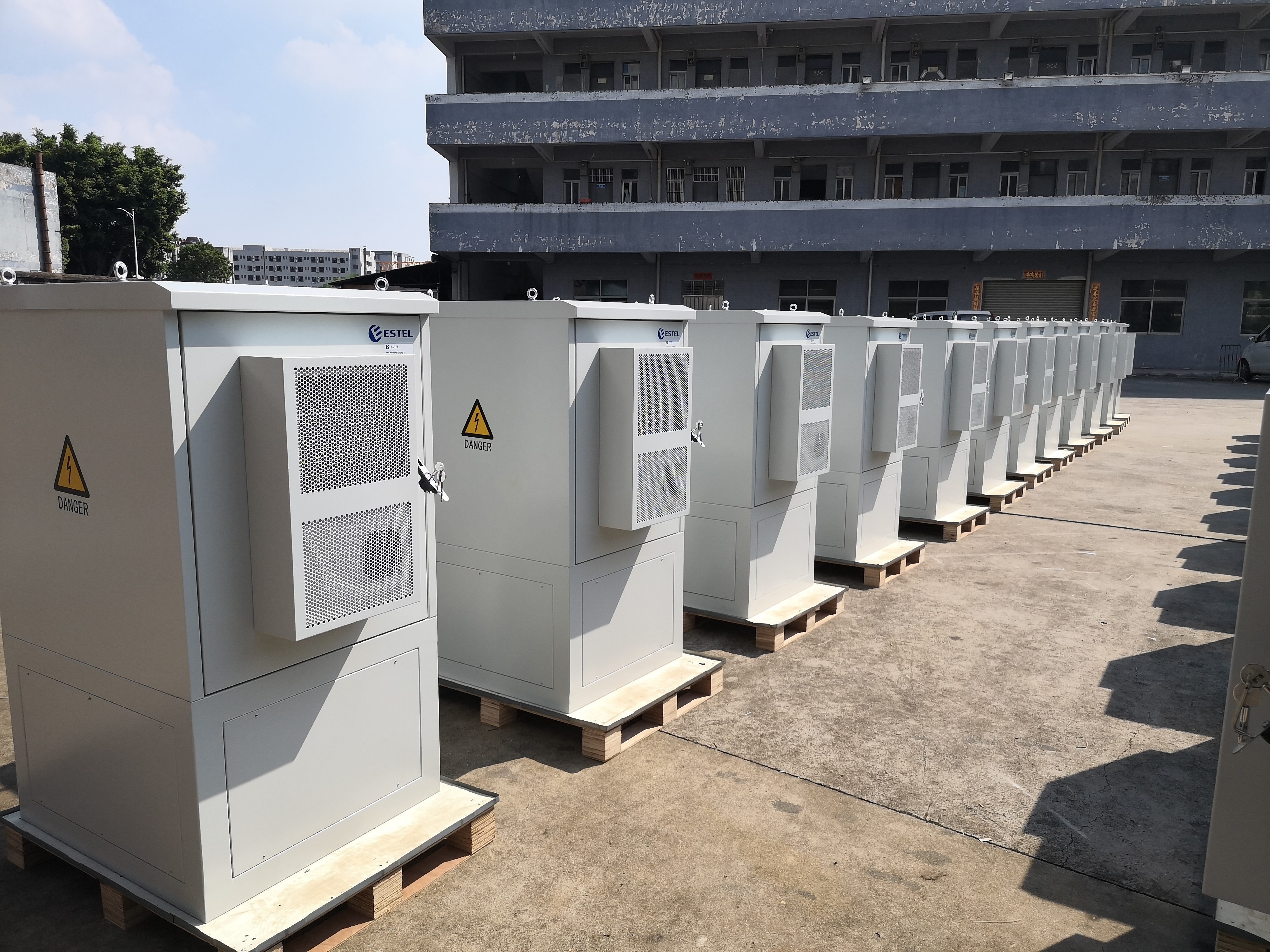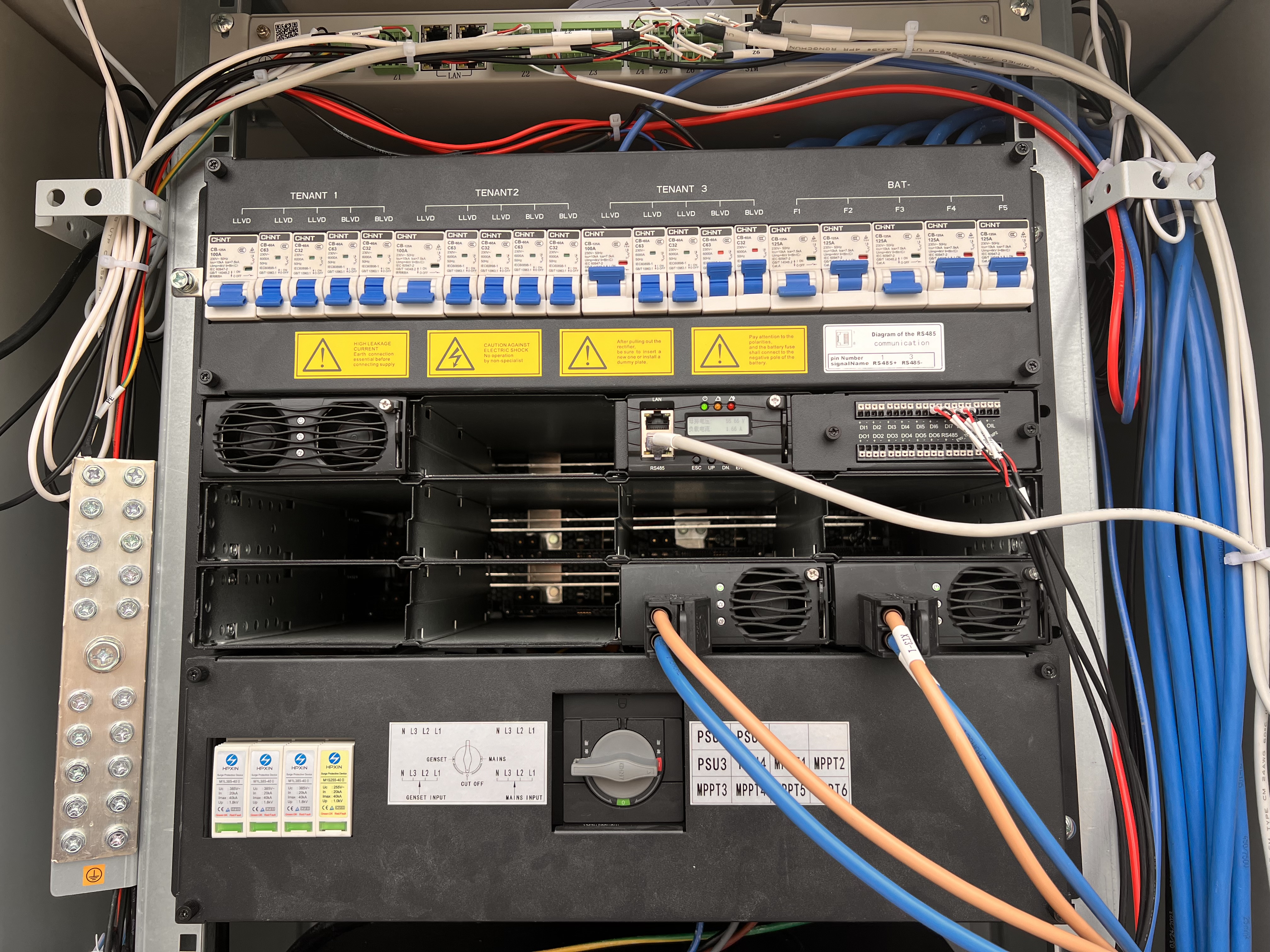ESTEL Outdoor Battery Cabinets What You Need to Know

Protecting your batteries from environmental damage starts with selecting the right outdoor battery cabinet. These cabinets shield batteries from harsh weather and extend their lifespan. You need a solution that balances security, durability, and climate control to ensure reliable performance.
An outdoor enclosure system offers many benefits, including safeguarding your equipment against dust, debris, and UV exposure. It also optimizes space while supporting power management needs. By choosing the right cabinet, you ensure your batteries stay secure, functional, and ready to perform.
Key Takeaways
Pick a waterproof battery cabinet to guard against rain and wind. It keeps batteries working in all kinds of weather.
Get cabinets that block dust and dirt. Closed designs stop damage and cut down on cleaning work.
Choose strong locks and designs that can't be easily broken. These keep your batteries safe from thieves and unwanted access.
Find cabinets with temperature and moisture control. These features help batteries work better and last longer.
Use tough materials like rust-proof metals. This makes the cabinet last longer and lowers repair costs over time.
Protection from Environmental Elements

Outdoor battery cabinets play a critical role in shielding your batteries from harsh environmental conditions. A well-designed cabinet ensures your batteries remain functional and durable, even in challenging outdoor settings. Let’s explore the key design features that provide protection from the elements.
Weatherproof Outdoor Battery Cabinet Design
A weatherproof outdoor battery cabinet is essential for safeguarding your batteries against rain, wind, and extreme temperatures. These cabinets are constructed with materials that resist water ingress and maintain structural integrity under harsh conditions. Standards like IP and NEMA ratings indicate the level of protection offered. For example, an IP65-rated cabinet provides excellent resistance to water and dust, making it ideal for outdoor use. By choosing a weatherproof design, you ensure your batteries stay operational, regardless of the weather.
Dust and Debris Resistance
Dust and debris can compromise the performance of your batteries over time. Outdoor battery cabinets with sealed enclosures prevent particulate matter from entering and damaging sensitive components. Gaskets and filters are often incorporated into the design to enhance resistance to dust. This feature is particularly important in areas prone to high winds or dusty environments. A dust-resistant cabinet not only protects your batteries but also reduces maintenance needs, saving you time and effort.
UV Protection for Longevity
Prolonged exposure to sunlight can degrade materials and reduce the lifespan of your battery cabinet. UV-resistant coatings or materials are crucial for outdoor enclosure systems. These design features prevent cracking, fading, and other damage caused by ultraviolet rays. By investing in a cabinet with UV protection, you extend its durability and ensure reliable performance for years to come.
Security Features in Battery Cabinets
Outdoor battery cabinets must prioritize security to protect your batteries from unauthorized access and potential damage. A well-designed battery cabinet incorporates advanced security features to ensure your equipment remains safe and functional.
Locking Mechanisms for Enhanced Security
Locking mechanisms are the first line of defense for your battery cabinet. These systems prevent unauthorized access and safeguard your batteries from tampering. Modern outdoor battery cabinets often feature secure locking mechanisms that provide enhanced safety. The table below highlights the benefits of these features:
Feature | Benefit |
|---|---|
Secure Locking Mechanisms | Prevents unauthorized access and tampering. |
Enhanced Safety | Provides a secure and safe environment for battery systems, reducing the risk of damage or hazards. |
By choosing a cabinet with robust locks, you ensure your batteries remain protected in any environment.
Tamper-Resistant Construction
Tamper-resistant construction adds another layer of security to your battery cabinet. These designs use reinforced materials and concealed hinges to deter tampering attempts. For example, cabinets with welded seams and heavy-duty steel frames resist forced entry. This construction not only protects your batteries but also ensures the cabinet maintains its structural integrity over time. You can rely on tamper-resistant designs to keep your equipment secure, even in high-risk areas.
Alarm Systems and Monitoring Options
Advanced alarm systems and monitoring options enhance the security of your battery cabinet. Motion sensors, door alarms, and remote monitoring systems alert you to unauthorized access in real time. These features allow you to respond quickly to potential threats, minimizing the risk of damage or theft. Some outdoor battery cabinets also integrate with centralized security systems, providing comprehensive protection for your batteries. By investing in a cabinet with alarm systems, you gain peace of mind knowing your equipment is under constant surveillance.
Climate Control in Outdoor Enclosure Systems

Maintaining optimal conditions inside your outdoor battery cabinet is essential for ensuring battery performance and longevity. Climate control features address temperature, humidity, and airflow challenges, creating a stable environment for your batteries.
Temperature Regulation for Battery Performance
Temperature fluctuations can significantly impact battery efficiency and lifespan. Outdoor battery cabinets equipped with temperature regulation systems help maintain consistent conditions. These systems often include cooling fans, heating elements, or thermal insulation to prevent overheating or freezing.
A study of temperature regulation parameters highlights the importance of discharge rate and electrical configuration in controlling maximum temperature and temperature differences.
Parameter | Contribution to Max Temperature | Contribution to Max Temp Difference |
|---|---|---|
Discharge Rate | 58.2% | |
Electrical Configuration | 42.5% | 38.6% |
By selecting a battery cabinet with effective temperature control, you ensure your batteries operate efficiently under varying conditions.
Humidity Control Solutions
Excess humidity can lead to corrosion and reduced battery capacity. Outdoor battery cabinets often feature humidity control solutions such as desiccants, dehumidifiers, or sealed enclosures. These systems protect batteries from moisture-related damage and ensure operational safety.
Humidity control solutions undergo rigorous testing in controlled environments like humidity chambers. These tests evaluate durability, corrosion resistance, energy capacity retention, and operational safety under accelerated aging scenarios. Cabinets with reliable humidity control extend battery life and reduce maintenance needs.
Ventilation and Airflow Management
Proper ventilation prevents heat buildup and ensures consistent airflow within the battery cabinet. Advanced designs incorporate filters and air jets to enhance ventilation efficiency. Laboratory evaluations show that configurations with additional replacement air improve local air change rates, reducing the risk of overheating.
Another study demonstrates the benefits of quasi-periodic airflow oscillations for ventilation efficiency. Computational fluid dynamics simulations reveal that unsteady airflow dynamics provide better results than traditional steady-state methods. Choosing a cabinet with optimized airflow management ensures your batteries remain cool and functional.
Material Durability for Outdoor Battery Cabinets
When selecting a battery cabinet, you need to prioritize durability to ensure it withstands the challenges of outdoor environments. A durable enclosure protects your batteries from corrosion, impacts, and harsh conditions, extending their lifespan and maintaining performance.
Corrosion-Resistant Materials
Corrosion can compromise the structural integrity of your battery cabinet, especially in areas with high humidity or exposure to chemicals. Cabinets made from corrosion-resistant materials, such as stainless steel or aluminum, provide long-lasting protection. These materials undergo rigorous testing to validate their effectiveness.
Testing Method | Purpose |
|---|---|
Salt Spray Testing | Assesses material's resistance to corrosive saltwater environments. |
Acid and Alkali Resistance | Evaluates materials exposed to different pH levels for industrial use. |
Environmental Testing | Tests performance in real-world weather conditions and pollutants. |
By choosing a cabinet with these tested materials, you ensure your batteries remain safe from corrosive damage.
Impact-Resistant Construction
Outdoor battery cabinets often face physical impacts from debris, tools, or accidental collisions. Impact-resistant construction ensures your cabinet can handle these challenges without compromising its protective capabilities. Reinforced frames, heavy-duty panels, and shock-absorbing designs enhance the cabinet's ability to withstand external forces. This level of durability not only protects the batteries inside but also reduces the need for frequent repairs or replacements.
Longevity in Harsh Environments
Harsh environments, including extreme temperatures, UV exposure, and chemical pollutants, can degrade a battery cabinet over time. To combat these challenges, manufacturers use advanced materials and coatings that enhance longevity.
Fiberglass offers excellent chemical resistance.
Polycarbonate provides UV resistance and durability.
Protective Coatings improve the enclosure's ability to withstand environmental stress.
By investing in a cabinet designed for longevity, you protect your batteries and reduce long-term maintenance costs.
Determining Battery Capacity and Size
Choosing the right battery cabinet size and capacity is essential for ensuring your batteries meet your application’s demands. By evaluating your storage needs, optimizing space, and considering modular designs, you can create a system that is both efficient and scalable.
Assessing Storage Needs for Your Application
Understanding your storage requirements begins with analyzing your battery type and quantity. Different applications, such as residential, industrial, or commercial, demand varying levels of battery backup capacity. For instance, residential systems often focus on increased self-consumption, while industrial setups prioritize peak shaving.
Studies have used advanced methodologies like Monte Carlo simulations to assess how different applications impact battery capacity and reliability. These analyses reveal that mission profiles, such as frequency containment reserve or photovoltaic self-consumption, directly influence the wear and tear on power electronics. By identifying your specific application, you can select a battery cabinet that aligns with your energy storage goals.
Space Optimization in Compact Areas
Space constraints often pose challenges when installing outdoor battery cabinets. Optimizing the design ensures you make the most of limited areas without compromising functionality. Lightweight materials and innovative layouts play a significant role in achieving this.
Research highlights several successful design improvements. For example, one study achieved a 43.25% weight abatement ratio through lightweight optimization, while another reduced stress and deformation in compact enclosures. These advancements demonstrate how efficient designs can enhance both space utilization and durability.
Study | Weight Reduction | Weight Abatement Ratio | Design Improvement |
|---|---|---|---|
Zheng et al. | 47.82 kg | 43.25% | Lightweight design optimization of battery packs |
Gao et al. | 15.22 kg | 19.82% | Topology optimization for improved efficiency |
By choosing a cabinet with optimized space-saving features, you can maximize storage capacity even in compact areas.
Modular and Scalable Designs
Modular and scalable designs offer flexibility for expanding your battery system as your needs grow. These designs allow you to add or remove components without replacing the entire cabinet, saving time and money.
Market data supports the advantages of modular systems. They increase uptime and reliability, reduce energy costs, and even create additional revenue streams by enabling energy resale. For example, modular designs are particularly beneficial for managing capacity constraints in electric vehicle charging stations.
Feature | Benefit |
|---|---|
Increased Uptime & Reliability | Ensures minimal downtime during grid outages. |
Energy Cost Reduction | Lowers utility bills through efficient energy management. |
Additional Revenue Streams | Enables selling unused energy back to the grid. |
Enhanced EV Charging Deployment | Manages capacity constraints for fast charging sites. |
By investing in a modular battery cabinet, you future-proof your system and ensure it adapts to changing energy demands.
Power Management Solutions in Battery Cabinets
Power management is a critical aspect of any battery cabinet. It ensures your batteries operate efficiently and reliably, whether for outdoor use or indoor applications. Let’s explore how integrated power distribution systems, monitoring features, and renewable energy compatibility enhance battery backup performance.
Integrated Power Distribution Systems
Integrated power distribution systems simplify the management of your battery cabinet. These systems reduce the need for external components, making installation easier and more efficient. For example:
The C&D 1005 Pure Lead Battery Cabinet reduces the battery backup system footprint by up to 28%.
Some cabinets include onboard data storage, enabling lifetime performance tracking and predictive analytics.
Models like the BC 2 battery cabinets are designed to be more reliable and sustainable, with the smallest footprint in the industry.
These features not only save space but also improve operational efficiency. By choosing a cabinet with integrated power distribution, you ensure safe and simple maintenance while optimizing your battery backup time.
Monitoring and Control Features
Monitoring and control systems allow you to track your battery’s health and performance in real time. Advanced systems like Emerson’s Ovation Green™ and PowerShield8 provide dynamic monitoring capabilities. Key benefits include:
Real-time views of battery health, ensuring you can address issues promptly.
Predictive analytics that help you plan maintenance and avoid unexpected failures.
Support for monitoring unlimited batteries, making these systems ideal for both small and large setups.
With these features, you gain better control over your battery cabinet, ensuring reliable backup power when you need it most.
Compatibility with Renewable Energy Systems
Battery cabinets designed for renewable energy systems offer enhanced reliability and efficiency. Hybrid energy storage systems (HESS), which combine batteries with supercapacitors, address the challenges of fluctuating charge and discharge cycles. This integration improves system performance and extends the lifespan of your batteries.
By selecting a cabinet compatible with renewable energy, you can maximize the benefits of solar, wind, or other green energy sources. This ensures your battery backup time aligns with your energy needs while supporting sustainable practices.
Selecting the right outdoor enclosure system ensures your batteries remain protected and functional for years. Durable materials reduce maintenance costs and extend the lifespan of your equipment. Proper climate control prevents overheating, safeguarding your batteries from performance issues. Security features, such as strong locks and tamper-resistant designs, protect valuable equipment from theft.
Factor | Benefit |
|---|---|
Material Durability | Durable materials reduce maintenance costs and the need for replacements, ensuring longevity. |
Cost-Effectiveness | Choosing the right enclosure can save money in the long run by protecting equipment. |
Security Features | Strong locks and hidden hinges enhance security, protecting valuable equipment from theft. |
Climate Control | Proper climate control prevents overheating, which can lead to equipment failures and reduced lifespan. |
ESTEL’s outdoor enclosure systems offer long-term benefits by combining durability, security, and climate control. User satisfaction surveys confirm their effectiveness, with benchmarks showing reduced costs and improved production efficiency.
Metric | Current Benchmark | Target Improvement |
|---|---|---|
Cost per Unit | $75/unit | $65/unit (13% reduction) |
Cycle Time in Production | 8 hrs | 6.5 hrs (18.75% improvement) |
Supplier Cost Efficiency | 90% quality-to-cost ratio | 95% quality-to-cost ratio |
By choosing ESTEL, you gain reliable solutions tailored to diverse applications, ensuring your batteries perform optimally while delivering long-term benefits.
FAQ
What is the purpose of an outdoor battery cabinet?
An outdoor battery cabinet protects your batteries from environmental damage, theft, and performance issues. It ensures your batteries remain functional and secure in outdoor conditions.
How do I choose the right size for my battery cabinet?
Evaluate your storage needs based on the number and type of batteries you plan to use. Consider modular designs for scalability and compact layouts for space optimization.
Can outdoor battery cabinets handle extreme weather conditions?
Yes, most outdoor battery cabinets feature weatherproof designs, UV-resistant materials, and temperature regulation systems. These features ensure reliable performance in harsh environments.
Are battery cabinets compatible with renewable energy systems?
Many outdoor battery cabinets integrate seamlessly with renewable energy setups like solar or wind systems. They optimize energy storage and improve system efficiency.
Do battery cabinets require regular maintenance?
Minimal maintenance is needed for high-quality cabinets. Features like dust resistance, corrosion-proof materials, and humidity control reduce upkeep requirements.
See Also
Choosing The Perfect Outdoor Electrical Cabinet For Your Requirements
Simplified Installation Process For ESTEL Outdoor Telecom Cabinets
Essential Features For Durability In Outdoor Telecom Cabinets
Understanding Outdoor Enclosure Cabinets And Their Advantages
Key Characteristics And Benefits Of Outdoor Communication Cabinets
CALL US DIRECTLY
86-13752765943
3A-8, SHUIWAN 1979 SQUARE (PHASE II), NO.111, TAIZI ROAD,SHUIWAN COMMUNITY, ZHAOSHANG STREET, NANSHAN DISTRICT, SHENZHEN, GUANGDONG, CHINA


